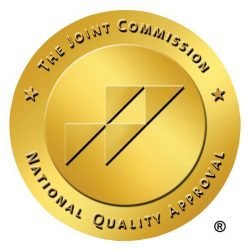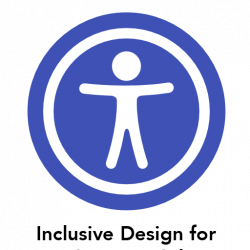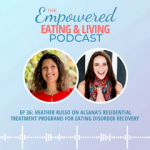
Recognizing the Signs of Eating Disorder Relapse
Originally published: January 25, 2022
Relapse Prevention is Possible
Eating disorder recovery is never “perfect” nor linear. Help clients understand that a “lapse” itself does not constitute a “relapse.”
Clients need support to see that temporary lapses are not failures as they offer valuable opportunities to learn and deepen commitment to recovery.
When lapses persist or become more frequent, clients may feel shame and avoid appointments with members of their care team; this is when they need their support network most. It is important to understand that while recovery lapses and setbacks are likely for most clients, eating disorder relapse is not inevitable. If caught early enough, relapse is preventable.
Signs of eating disorder relapse
What do you need to know to recognize eating disorder relapse? Every individual will have a unique recovery story, and as the treating clinician, you offer a safe space, a shame-free mirror, that can most accurately reflect symptoms and behaviors needing attention. Some of the general signs that may indicate a risk of relapse include:
- A pattern of missing or rescheduling appointments with you and others on the treatment team
- A shift from the eating plan that your client was following during the early stages of recovery
- Eliminating a new food or progressive elimination of foods from a specific food group based on social media advice or community pressure
- Avoiding social meal outings due to discomfort from eating in public or fear of the menu regardless of social support available during the outing
- An increase in rigidity around eating patterns, including rigidity around the recovery eating plan itself due to fears of making mistakes or too much dependence on “the plan that worked”
- Signs of withdrawal or depression in both independent and social situations
- An increase in time spent perusing social media
- An increase in conversations comparing body or food behaviors with others
- Signs of an increase in a behavior pattern that may reflect a transfer of “addictions” such as more frequent shopping trips or package home-deliveries
- More frequent participation in group exercise classes or individual exercise in general
- An increase in “mirror checking” or trying on clothing previously worn during the active eating disorder days
- A pattern of missing small but cumulative “daily life skills,” like buying groceries, paying bills, walking a pet, self-care appointments, doing laundry, etc.
- A pattern of missing prescribed medications, whether from forgetfulness or avoidance.
- A change in personal hygiene as an indication of isolation, depression, and apathy
- A significant change in body weight in either direction compared to usual weight range
- A lack of focus on work, including an increase in missed days on the job
If your client is showing one or more of these signs, it is worth reflecting on the consistency of any individual patterns as any of the above, standing alone, may not be more than a temporary transition back into the real world as a newly recovered individual. However, patterns, or an accumulation of signs over time, may warrant closer observation and a compassionate conversation about the possibility of relapse.
Relapse rates
Eating disorders are complex mental health conditions that can be challenging to treat and can often have a high rate of relapse. While relapse rates can vary based on the specific type of eating disorder, individual factors, and the type of treatment received, research suggests that the overall rate of relapse for individuals with eating disorders is relatively high.
For individuals with Anorexia Nervosa (AN), studies have shown that around 30-50% of patients will relapse within one year of treatment, with up to 70% experiencing a relapse within two to three years. For individuals with Bulimia Nervosa (BN), relapse rates are also high, with up to 50% of individuals relapsing within one year of treatment. For Binge Eating Disorder (BED), the rate of relapse can be slightly lower, with around 20-30% of individuals experiencing a relapse within one year of treatment.
It’s essential to note that relapse is a common occurrence in eating disorder recovery, and it doesn’t mean that treatment has failed or that the individual has failed. Relapse can be a normal part of the recovery process, and it’s important to continue seeking support and treatment to maintain progress toward recovery. Additionally, early identification of warning signs and prompt intervention can help prevent relapse or catch it early before it becomes more severe.
Relapsing is not a sign of failure
At Alsana, we are here to support you and your client through every stage of the recovery journey. For some clients, that may include multiple re-admissions to a higher level of care or frequent transitions between levels of care. Frequency does NOT mean the loss of hope in full recovery as research tells us that breaking the chains of an eating disorder can require several admissions into a higher level of support before full recovery has been reached. Every lapse, and even a relapse, is an opportunity to learn more about the underlying thoughts and behavior patterns that your client has used to survive and cope with life at the moment – and any opportunity to recognize and confront hurtful thoughts, beliefs, and behaviors within an empathetic, supportive and safe environment will strengthen the very foundation on which lasting recovery is built.
Relapse prevention
Our eating recovery community is here to help your clients achieve and maintain full recovery from the eating disorder. If you’d like to discuss whether our services may be right for your client, Live Chat with Admissions now.
Sources
Arcelus, J., Mitchell, A. J., Wales, J., & Nielsen, S. (2011). Mortality rates in patients with anorexia nervosa and other eating disorders: A meta-analysis of 36 studies. Archives of General Psychiatry, 68(7), 724-731. doi:10.1001/archgenpsychiatry.2011.74
Berkman, N. D., Lohr, K. N., & Bulik, C. M. (2007). Outcomes of eating disorders: A systematic review of the literature. International Journal of Eating Disorders, 40(4), 293-309. doi:10.1002/eat.20369
Crow, S. J., Peterson, C. B., Swanson, S. A., Raymond, N. C., Specker, S., Eckert, E. D., & Mitchell, J. E. (2009). Increased mortality in bulimia nervosa and other eating disorders. American Journal of Psychiatry, 166(12), 1342-1346. doi:10.1176/appi.ajp.2009.09020247
Fairburn, C. G., Cooper, Z., Doll, H. A., O’Connor, M. E., Bohn, K., Hawker, D. M., & Wales, J. A. (2009). Transdiagnostic cognitive-behavioral therapy for patients with eating disorders: A two-site trial with 60-week follow-up. American Journal of Psychiatry, 166(3), 311-319. doi:10.1176/appi.ajp.2008.08040608
Hay, P., Chinn, D., Forbes, D., Madden, S., Newton, R., Sugenor, L., & Touyz, S. (2014). Royal Australian and New Zealand College of Psychiatrists clinical practice guidelines for the treatment of eating disorders. Australian & New Zealand Journal of Psychiatry, 48(11), 977-1008. doi:10.1177/0004867414555814

Summer Intensives for Relapse Prevention
ENROLLMENT NOW OPEN

Virtual PHP/IOP
Early intervention and step-down programming for adult clients of all genders.
Our Recommended Articles
Start the road to recovery with Alsana.








